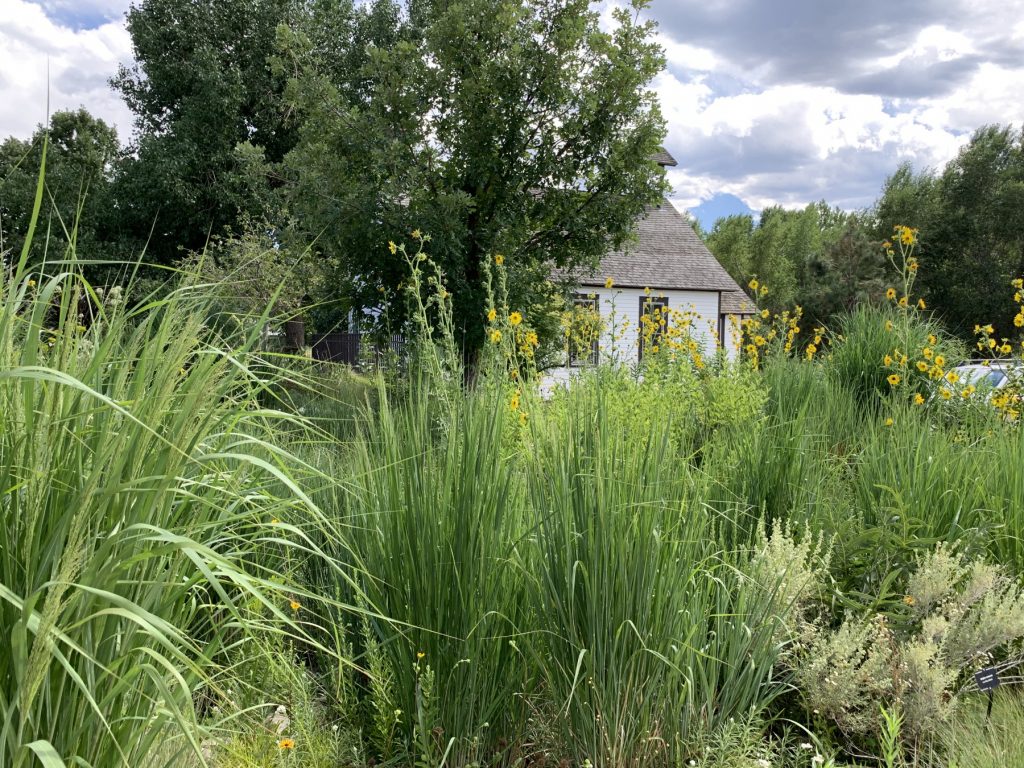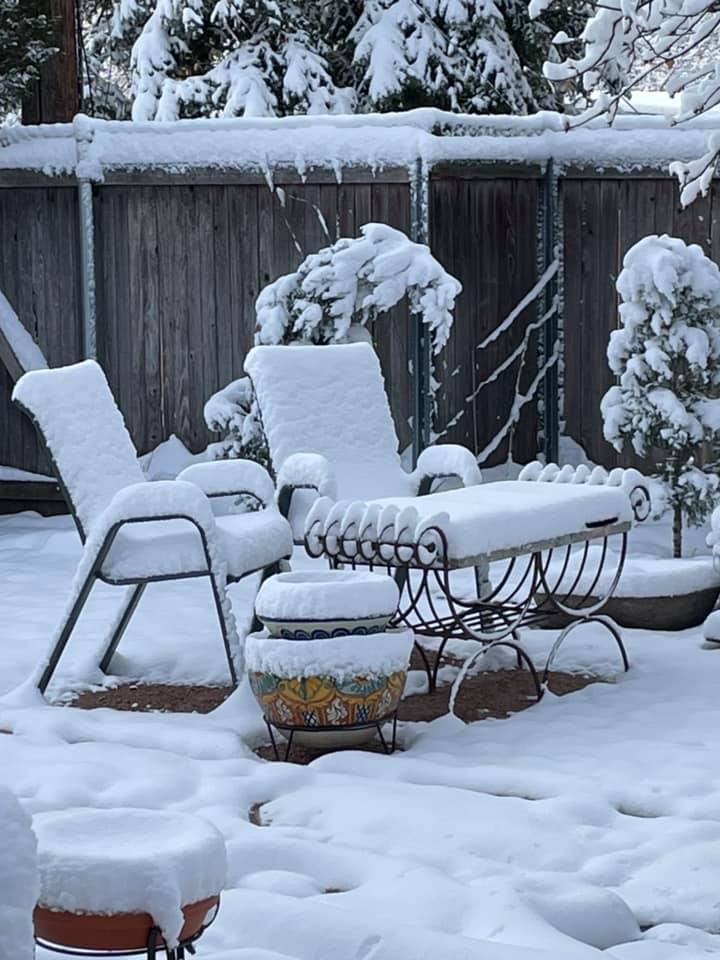Tomorrow I am meeting a new arrival to Colorado, an Englishwoman from the Home Counties who has bought a house to be near family. She’s keen for advice and gardening connections in this strange land—her English garden sounds like a veritable Eden. She may be surprised that the best advice I can give her for gardening in the Rockies is quite simple: Choose plants with tiny leaves, mostly natives. This way the garden may survive the extremes of weather, i.e., hail the size of golf balls just as plants begin to leaf out, and year-round drought conditions.

April is National Native Plant Month, so it’s good timing to drive this message home, supported by a sobering report headlining that the West is in for another thirsty summer since the snowpack melt in the Colorado River Basin is at a worrying low, and will be felt in reservoir shortfalls that feed six states from Wyoming to California and already-parched Arizona. This season, the snowpack level peaked on 2 April, and since then the melt rates have been rapid, all which forecasts some degree of drought, since early peaking and melting generally indicates low water supplies for the dry season.
Yet, with the view from my window of the glistening snowy crown atop Pikes Peak and whiteness blanketing the Rocky’s range to the south and north as far as I can see, it’s hard to swallow. That, and the fact that as I write this on April 19, more snow is expected today. But it’s a fact of life in the west that died-in-the-wool (and wrapped in it to keep warm) gardeners here struggle to come to terms with. Couple that with the unfairness of a steady stream of bulb and seed catalogues dropping on the doormat, like colorful snowflakes on barren ground, you can perhaps sense my ennui?

The other thing I would recommend to the British transplant is to also invest in a sturdy greenhouse (although hail and high “Chinook” winds are problematical). If she has any hopes of recreating a verdant garden–hosta leaves flapping seductively in the gentle breeze, towering spires of delphiniums, frilly ferns and the like–handsome containers and glass walls will help control the worst that the wild West climate can throw at a gardener. Water, too, will be better rationed and moisture retained, and much less likely to evaporate, especially if the glasshouse is given a site with some shade from the relentless summer sun, we at high altitude bake beneath.

Okay, maybe I am dreaming, or profoundly influenced by visits to Denver Botanic Garden’s glasshouses. It matters not, glass in the West can be your friend. Particularly if one has any intention of growing vegetables; and this season I have pretentions to doing so with a tray of tomatoes gasping for life on a windowsill. I shuffle the tray in and out morning and night, chasing the sun and avoiding the cold (it was 13°F last night). As Larry Stebbins, who founded the hugely successful Pikes Peak Urban Gardener coalition remarked, “Well, you did start them about three weeks too early.” Doh… A friend from India who gardens in his hallway in Denver gave me a baby curry plant that he’s been coddling on his kitchen window with a tray of its siblings. I had to pass a test before he’d release it to my care–mostly questions about water and light. Oh…for a greenhouse.
But, despite my whining, I must admit that once our 15-minute Spring gives way to glorious Summer, the garden slaps on its makeup, squeezes into its sexiest dress and just blows your socks off. Even those squirrely little natives become eye candy.
As they say, “I wasn’t born in the West, but I got here soon as I could.” Good job I love a challenge.
©Text and photos, Ethne Clarke, 2021.
Weather reporting on 2021 drought conditions for the West from
https://www.washingtonpost.com/weather/2021/04/16/colorado-water-basin-snowpack-drought/
Larry Stebbins wrote The Book on vegetable gardening in the Front Range, and it has proved to be invaluable to gardeners throughout the “mid-latitude” states (I should read it more closely!). Copies are available on line:
https://books.apple.com/us/book/backyard-vegetable-gardening-guide/id797330031?ign-mpt=uo%3D4
Chatfield Farms is the outreach garden of Denver Botanic Gardens located southwest of Denver. It’s an educational center focusing on native plants, lavender-growing and much else. Learn more about it here:
https://www.botanicgardens.org/
Garden societies are perhaps the most useful tool in a gardener’s bucket, and the Colorado Native Plant Society ticks all the boxes. Similar groups with regional chapters exist throughout the west to hold our hands and give cause to celebrate that we garden where we do. Arizona: https://aznps.com/ . Wyoming: http://www.wynps.org/. Utah: https://www.unps.org/index.html. Nevada:https://www.nvnps.org/. New Mexico:https://www.npsnm.org/. California: https://www.cnps.org/.


